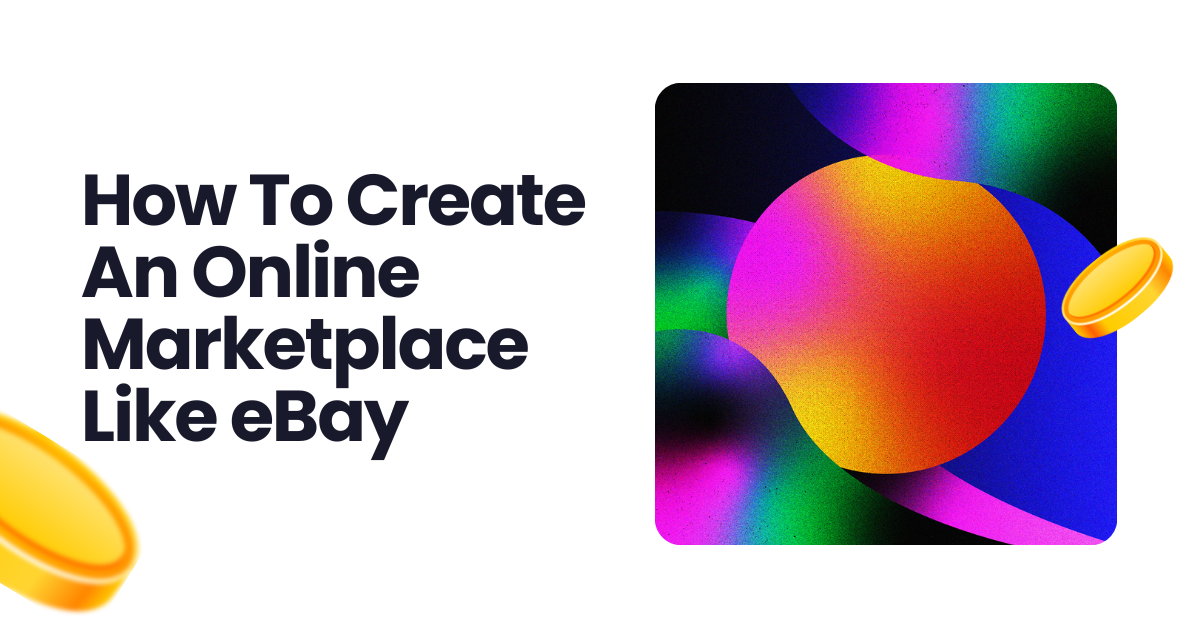Introduction
In the ever-evolving world of e-commerce, creating an online marketplace like eBay can be a lucrative venture. eBay, with its vast network of buyers and sellers, stands as a testament to the potential of online marketplaces. This comprehensive guide will walk you through the essential steps, strategies, and best practices for create online marketplace.
Understanding the Online Marketplace Concept
Before delving into the nitty-gritty of creating an online marketplace, let’s gain a solid understanding of the concept. An online marketplace is a platform that facilitates transactions between buyers and sellers, acting as an intermediary.
Key Characteristics:
- Diverse Products: Online marketplaces offer a wide range of products, catering to various customer needs.
- Scalability: The platform should handle a growing number of users and products seamlessly.
- User-Friendly: A user-friendly interface is crucial for both buyers and sellers.
- Security: Ensure secure payment processing and data protection.
Step 1: Market Research
Every successful venture begins with thorough market research. Understanding your target audience, competitors, and the niche you plan to serve is essential. Conduct surveys, analyze data, and gather insights to make informed decisions.
Tips:
- Identify gaps in the market.
- Explore niche markets to differentiate from competitors.
- Research your potential competitors and their strategies.
Step 2: Choose Your Niche
Selecting the right niche is pivotal for your marketplace’s success. Decide whether you want to cater to a specific industry or offer a broad range of products. Consider your interests, expertise, and market demand.
Tips:
- Focus on a niche you’re passionate about.
- Evaluate the potential profitability of the chosen niche.
Step 3: Business Model
Your business model will determine how you generate revenue. Common models include commission fees, subscription fees, and listing fees. Carefully evaluate which model aligns best with your niche and target audience.
Tips:
- Consider a freemium model to attract initial users.
- Offer multiple pricing options for sellers.
Step 4: Platform Development
Now comes the technical part. You can either build your marketplace from scratch or use a ready-made solution. Consider factors like scalability, security, and user-friendliness.
Tips:
- Hire experienced developers.
- Implement robust security measures to protect user data.
Step 5: User Experience
A seamless user experience is vital for retaining customers. Invest in user-friendly design, easy navigation, and responsive customer support.
Tips:
- Focus on responsive design for mobile users.
- Implement a rating and review system for trust-building.
Step 6: Seller Onboarding
Attracting sellers to your platform is crucial. Develop an efficient onboarding process, provide resources, and offer support to help them succeed.
Tips:
- Create a straightforward registration process.
- Offer seller guides and educational materials.
Step 7: Marketing and Promotion
Market your platform through various channels, including social media, email marketing, and content creation. Building a strong online presence is essential.
Tips:
- Utilize SEO to boost your platform’s visibility.
- Collaborate with influencers in your niche for promotion.
Conclusion
Creating an online marketplace like eBay is a challenging yet rewarding endeavor. With the right strategies, dedication, and a focus on user experience, you can establish a platform that connects buyers and sellers effectively. Keep evolving, stay updated with market trends, and you’ll be on your way to building the next big online marketplace.
FAQs
Q1: What sets eBay apart from other marketplaces?
eBay’s unique auction-style listings and vast user base make it stand out. It allows both new and used items, making it diverse and exciting.
Q2: Can I use existing e-commerce platforms to create my marketplace?
Yes, you can opt for platforms like WooCommerce, Magento, or Shopify, but customization is key to making it unique.
Q3: How do I ensure trust among users on my platform?
Implement user reviews and ratings, secure payment gateways, and provide reliable customer support.
Q4: What marketing strategies work best for online marketplaces?
Utilize content marketing, social media, and email marketing. Collaborate with influencers and focus on SEO to improve visibility.
Q5: Is it necessary to offer a mobile app for my marketplace?
While a mobile-responsive website is essential, a dedicated app can enhance the user experience and engagement.




